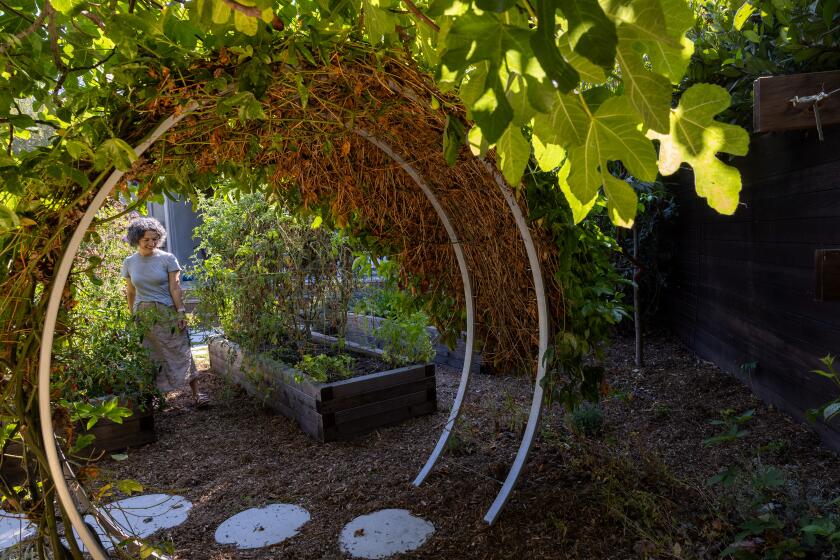Golden Opportunity : The Hills Are Alive--With Flowering Wild Mustard
On a verdant hillside in San Juan Capistrano, George Katsiyiannis filled a brown paper shopping bag with dark green leaves from a thick patch of weedlike plants that were almost waist high.
“This is a good thing,” he said. “People pay a lot of money for this in the stores. I’m getting it for nothing.”
Like hundreds of others in Southern California at this time of year, Katsiyiannis was picking wild mustard greens, which in spring and early summer sprout millions of tiny blossoms, spreading a bright wash of yellow over hills and fields.
The plant was introduced on the West Coast about 200 years ago, and there are at least three theories on how wild mustard, native to Spain and other Mediterranean countries, arrived here.
“I read somewhere that early settlers around what is now Newport Beach planted it so that sailing-ship captains could get their bearings from the fields of yellow flowers,” said Betty Crawmer, a botanist with the Orange County Agricultural Commission.
An even more widely accepted idea is that Gaspar de Portola brought the seeds from Spain and planted them to mark his trail as he led his expedition north from Mexico in 1769 to found the missions in California.
Jim Sleeper, author and Orange County historian, doesn’t go for either of those notions, however. He said, “I couldn’t believe Portola was such a poor navigator and woodsman that he needed to mark a trail that way.”
Sleeper thinks it more likely that the seeds got here by accident, on the livestock Juan Batista Anza brought to Southern California with the first colonists in 1775.
Botanist Crawmer said she doubts it could have happened that way.
“The seeds are small and not at all sticky,” she said. “I don’t think they would have stayed in the animals’ fur all the way from Spain.”
However the wild mustard got here, though, the Indians around the Mission San Juan Capistrano made good use of it. They ate the leaves raw or boiled them like spinach, and pulverized the seeds in water to make a spicy paste. Early Spaniards also used the greens raw, in their salads.
Wild mustard greens are highly nutritious, according to reference material at the Orange County Community Services and UC Irvine Cooperative Extension Services office. They are low in calories (about 32 per cup of cooked greens) but rich in vitamins A and C, calcium and iron.
Deputy County Agricultural Commissioner William Amling said there is no way to estimate the acreage covered by wild mustard in Orange County.
“It’s just all around, in small patches here and large patches there, but especially on ground that has at one time or other been cultivated,” he said.
A tiny sample taste of a leaf is all it takes to make sure it is mustard. The flavor is hot and tangy, as its name implies, and it can be used raw to give salads a lift. It also can be boiled or steamed, but some of the spiciness is lost.
Katsiyiannis, of Laguna Beach, adds olive oil and lemon juice to the water when he cooks mustard greens.
“Yes, people pay a lot in stores for this,” he said. “Not me, though,” and he held up a bulging sack.
On the same day, at a grocery store less than a quarter-mile from where he stood, the price of a small bunch of wild mustard was 59 cents--and the supply was sold out.






